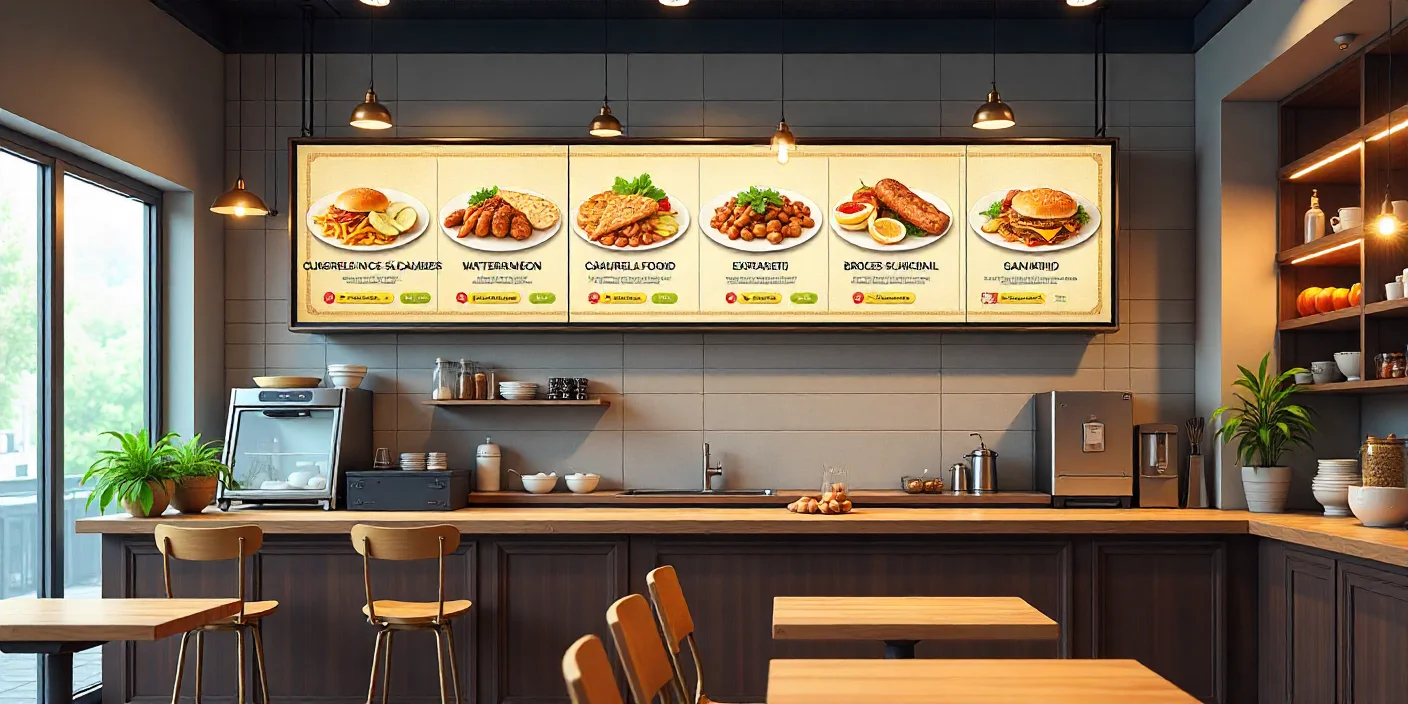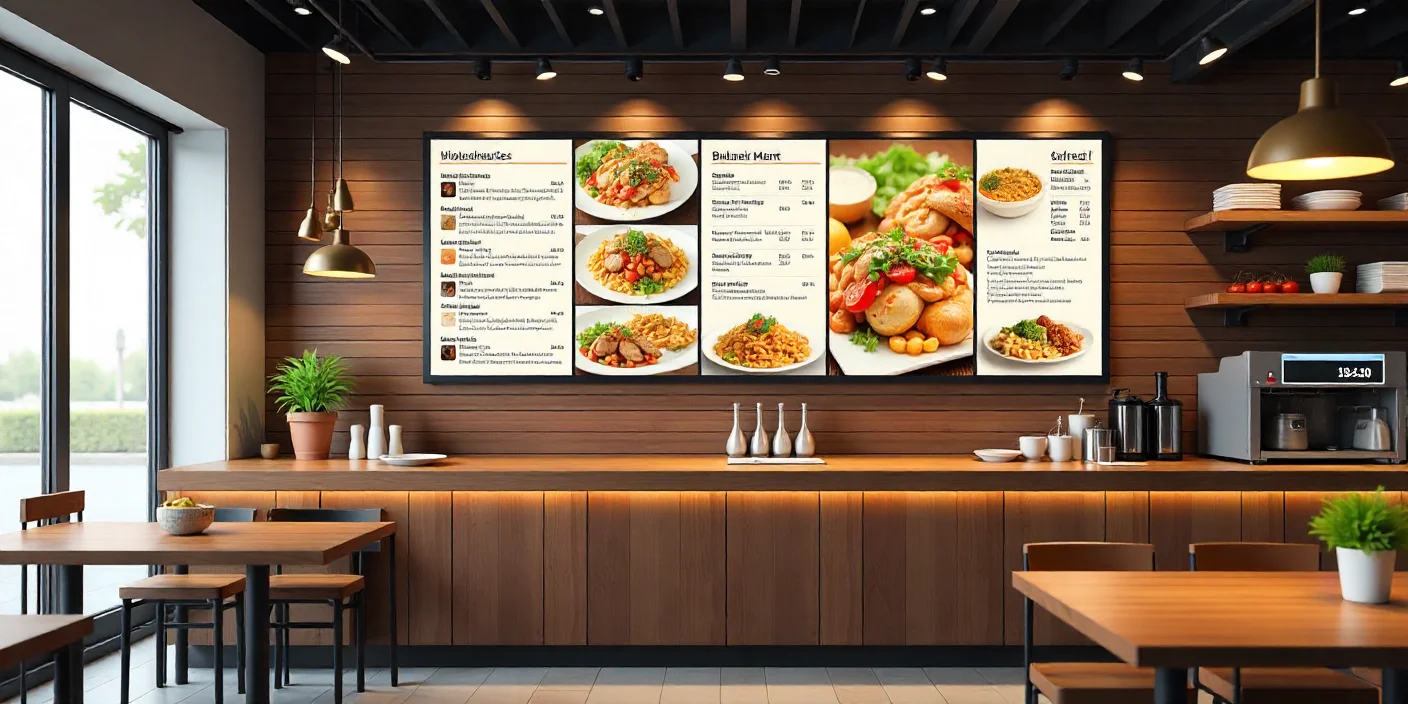Tired of being overlooked by passing customers?
You’re not alone. Even great products can get lost in the noise of today’s attention economy. Static posters fade into the background, while digital signage brings your storefront, café, or salon to life with motion, color, and storytelling.
Today’s digital signage solutions for small businesses are no longer a luxury reserved for big retailers—they’re smart, affordable, and easy to use. Boutique, pizza shop, co-working cafe, whatever business you run, digital displays can turn casual visitors into loyal customers.
See How Nento Makes Digital Signage Simple for Small Businesses.

Why Your Small Business Needs Digital Signage
Digital signage is not merely about screens, but it is about strategy. To small business owners, it becomes the connection between the real world and the virtual one.
Drive Sales & Promotions
Wish you could update a sale poster instantly? With digital signage, you can.
Show short-term deals, flash sales, and product highlights in real time. Use countdown clocks to create urgency or display Now Trending items that may arouse interest.
Quick Stat: Businesses using in-store digital screens see up to 30% higher sales on promoted items (Source: Nielsen Visual Impact Study).
Improve the Customer Experience
Customers hate waiting—but they don’t mind being entertained.
Display useful information such as your menu, daily specials, or the local news feeds. Use screens to make wait time appear less and make the flow within your shop easier.
Scenario: A salon displays hairstyle inspiration on screens while clients wait—the result? Happier customers and more add-on sales.
Build Your Brand
Brand consistency matters. Whether it is your logo or your colors, an intelligent digital signage solution will make all of your messages look professional and unified.
Use animations, HD images, and story loops to build a modern image and stay top-of-mind long after customers leave.
Save Time and Money
No more printing and redesigning of posters.
Using the cloud-based CMS by Nento, it is possible to update all screens within seconds using a single dashboard. You will not have to spend a lot on printing and manpower and will remain environmentally friendly.
Ready to Transform Your Customer Experience? Start Your Nento Free Trial Now.
How to Choose the Right Digital Signage for Your Business
Choosing the right setup doesn’t have to be overwhelming. The following is a simple guideline to use in selecting the appropriate digital signage to use in your business.
Step 1: Define Your Goals
You have to ask yourself, do you want to grow foot traffic, enhance communication, or advertise products?
Everything, content, and hardware, depends on your answer.
Step 2: Assess Your Hardware
You might already have the hardware you need.
A lot of business digital signage systems support normal televisions with a small streaming stick or media player. If you prefer a professional setup, Nento has engaged reputable screen manufacturers to provide longevity in performance.
Step 3: Evaluate the Software
This is the heart of your signage network. Select a user-friendly digital signage system platform with:
- Drag-and-drop content development.
- A library of templates
- Flexible scheduling tools
- Remote update cloud management.
Pro Tip: Look for platforms that support both images and video—motion attracts 5× more attention than static content.
Step 4: Plan Your Content
You don’t need to be a designer. Begin easy: display newcomers, reviews, or backstage videos. Your first campaign can go live in minutes—Nento already provides ready-to-use templates.
Step 5: Think About Placement & Scale
What are the best places to display your screens?
Start with one or two key spots—windows, checkout counters, or waiting areas—and scale as you grow.
Unsure Where to Start? Let Nento’s Experts Guide You. Book a Free Consultation Today.

Smart Digital Signage Solutions in Action
Here are real examples of how small businesses use digital signage to compete with bigger brands.
The Retail Boutique
There is only one screen close to the entrance that displays new arrivals and trending Instagram looks. The shoppers look at it, pause, and enter. The store records that there is a 22 percent growth in the number of people who visit the store in 30 days.
The Coffee Shop
The menu board is automatically updated throughout the day—morning brews, afternoon snacks, and evening desserts.
When the Wi-Fi password or loyalty QR code changes, it updates instantly across all screens.
The Restaurant
A small bistro makes use of rotating dish pictures and time-related offers: Lunch Special 11 AM–3 PM Only. The result? Stable turnover of tables and more high-margin sales.
The Service Studio
In place of wall posters, a local salon will display digital signage that will highlight styles, packages, and seasonal offers. Reservations increase 15 percent in 2 months.
Micro-Copy Success Snippet: “Before Nento, we changed posters every week. Now we change content in seconds.” — Lina M., Salon Owner, Toronto
The Power of All-in-One Platforms Like Nento
How far your signage takes you depends on your technology partner.
Seamless Integration
It works with any screen, player, or OS—no need to buy expensive new equipment
Ease of Use
The dashboard of Nento is intuitive, so anyone, whether it is a barista, a store manager, or a store owner, can design and plan displays within minutes.
Scalable and Affordable
Start small. Expand the number of screens or destinations subsequently without new training or complicated installations.
Cloud Control
Edit your messages in any place and at any time. New price? New offer? It is updated by one click everywhere.
Reliable Support
From installation to creative support, the staff of Nento offers round-the-clock services that will make sure your screens do not go black.
Experience the Nento Difference. Request Your Personalized Demo Now.

Frequently Asked Questions (FAQs)
Q1: What are digital signage solutions?
These systems integrate screens, media players, and software to display videos, menus, promotions, and social feeds in real time.
Is digital signage for business expensive and complicated?
A: Not anymore. Due to the all-in-one platform offered by Nento, the small businesses will be able to start affordably using TVs you already own. The installation requires minutes—no IT department will be needed.
How do I choose the right digital signage for my business?
A: Start with your targets and budget. Next look for easy-to-use software, dependable service, and flexibility. Nento ticks all those boxes.
Can I use my own TV for digital signage?
A: Yes. The majority of HDMI-compatible televisions should be compatible with a small Nento media player or even a streaming stick.
What kind of content can I display with Nento?
Photos, videos, social feeds, PDFs, or live updates like weather and news—your creativity sets the limit.
Still Have Questions? Talk to Our Team or Start Your Free Trial Today.
Your Small Business Deserves Big-Brand Impact
Digital signage has leveled the playing field for small businesses. It transforms your storefront into a place of attention, your waiting area into an engaging space, and your content into measurable sales.
The digital signage solutions offered by Nento to small businesses have the tools that were previously only available to large enterprise brands but are simplified, scalable, and affordable
Don’t Get Left Behind. Empower Your Small Business with Nento’s All-in-One Digital Signage Platform.





